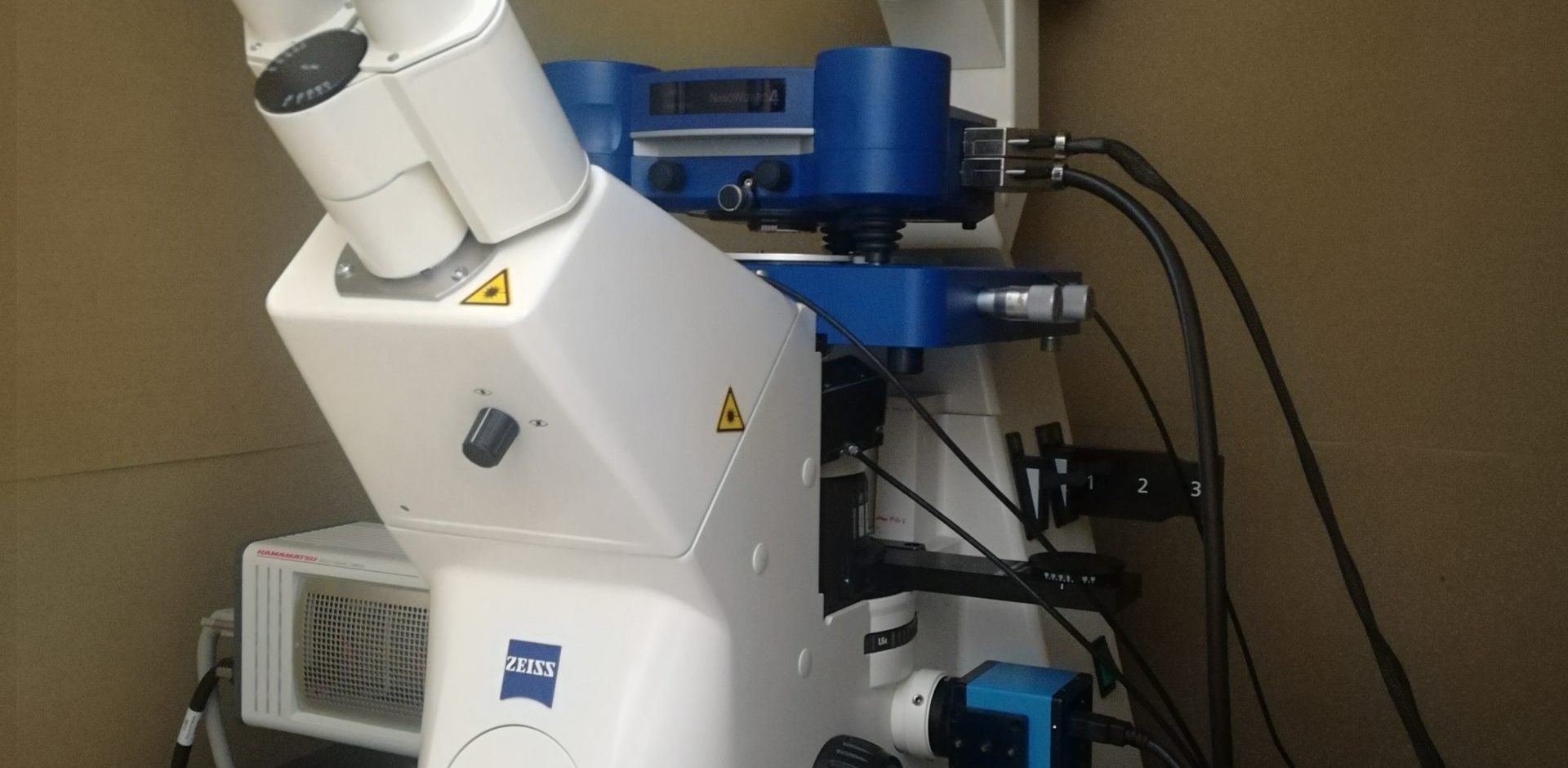AFM-based force spectroscopy measurements
Atomic force microscopy (AFM) is a powerful tool that has been used in different research areas, including nanomedicine. Among other features, AFM-based force spectroscopy allows the measurement of mechanical properties of the sample under study (e.g., proteins, bacteria or other cells) with a sensitivity of piconewtons. For this type of studies an AFM tip is brought into contact with the surface of the sample and then retracted. When the tip approaches the sample, a curve of force vs. distance is generated with no variation in the force (approach curve). When the tip touches the sample, a force is applied leading to the deflection of the cantilever with the tip. After this point, the tip retracts and another curve is generated (retraction curve). If the tip adheres to the sample surface (binding event), this curve will have a different shape. The force-distance curves also depends of the spring constant of the cantilever and the length of the deflection of the cantilever.
Taking advantage of our expertise on AFM (among other techniques), we are now applying AFM-based force spectroscopy as a tool to test the performance of medical devices. But how can we use this technique to validate medical devices? If we can measure the interaction forces between two molecules or one molecule and a surface, we can test the interaction of different molecules with the surface of a medical device. Going one step further, we can also test the interaction between two cells, or between a cell and a surface.
Study case: to test the interaction of bacteria with the surface of medical devices
We want to test the interaction of different bacterial strains with the surface of a specific medical device. Why is this so important? To reduce the complications that occur with implantable medical devices is of extreme importance. The bacterial infections associated with devices implantation are mainly related with three factors: the host, the bacteria and the device. The bacterial ability to adhere and to promote formation of biofilms at the surface of the devices is among the most important features related with the pathogenesis of medical device-associated bacterial infections. Despite all the efforts that have been done to develop new strategies to fight biofilms, their natural resistance to antibiotics is still a challenge. The improvement of medical devices in order to prevent bacterial infections is a major aim that needs to be fulfilled. One of the strategies that has been tested is the modification of the devices surface to prevent bacterial adhesion and the formation of biofilms. What we are currently doing is to assess if there is a binding between different bacterial strains and the surface of medical devices and, if there is an interaction, we measure the force necessary to overcome it.
How do we measure the interaction forces?
To measure the interaction of a specific molecule or cell with a surface we need to adhere this molecule or cell to the AFM cantilever, by a process called functionalization. First, we have to identify the best type of functionalization to adhere the bacteria to the AFM tip. The functionalization has to be strong enough to adhere the bacteria to the surface of the cantilever and to keep it there during the AFM retraction curve. Otherwise we would lose the bacteria attached to the surface of the device. However, the functionalization cannot modify the properties of the bacteria and should confer some flexibility to the bacteria during the retraction curve. After the incubation of the cantilevers with the bacteria, the cantilever is approached and retracted from the surface of the medical device. Analyzing the force-distance curves that are generated, the maximum force rupture values can be determined. This value gives us the force needed to break the interaction of the bacteria with the medical device surface. Moreover, the energy (work) necessary to break all the bonds that are formed between the bacteria and the medical device surface can also be determined by the area under the force-distance curves.
Testing medical devices by the bacterial strains interaction forces
The interaction forces can be measured for different bacterial strains and in different conditions, for example, varying the time of contact of the bacteria with the surface and in the presence of different media. The interaction force of different bacteria to the same surface may vary, and the same bacteria may have a different adherence to the surface of the device under different experimental conditions. Moreover, the same bacteria may have different interaction forces for different surface-modified medical devices. Performing all these tests, we can compare the interaction forces of different bacterial strains to the surface-modified medical devices, under several conditions. The sensitivity of AFM-based force spectroscopy may allow us to identify possible surface modification strategies that can be done to avoid the adherence of pathogenic bacterial strains, consequently decreasing the risk of infections after medical devices implantation.
Here, we exemplify with a current study case, but there is much more that can be tested taking advantage of the sensitivity of this technique. For instance, another working hypothesis for medical devices improvement is the replacement of biofilms of pathogenic bacteria with biofilms of nonpathogenic bacteria. In this case, the surface of the devices has to be more prone to the adherence of certain strains. As this approach was not yet proved to be clinical safe, the use of modified and/or coated surfaces seems to be a good strategy to prevent bacterial adherence. Besides bacterial strains, the interaction of other biological samples with the surface of devices can be tested by the same approach. For example, to test the interaction of proteins, nucleic acids, blood cells or other human cells can also provide information of high interest.


